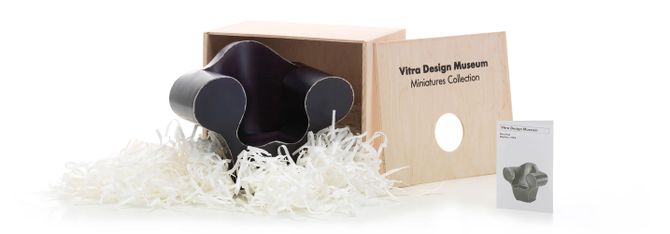
Miniatures Big Easy
Ron Arad, 1988
In 1988 and 1989, Arad's London »One Off« work shop created an entire series of »Big Easy« armchairs using bent sheet steel welded at the edges. The »Big Easys« were brought out as individual items or small limited series; they all had a striking basic form and inflated arms reminiscent of comics – but they differed in terms of the welding and color. In the course of time, the initially oarse, roughly welded »Big Easys« went through changes, first becoming colorful lacquered chairs with smooth surfaces and then elegant versions made of polished stainless steel.
Although Ron Arad's furniture are variants on everyday things, they seem strange and irritate the eye – not only owing to the choice of material. Formally and functionally speaking, they undermine customary assumptions. You feel you have to first learn how to use them. A »Big Easy's« voluminous steel body of the »Big Easy« resembles a traditional upholstered club armchair but can hardly be associated with a sense of comfortable interiors. Ron Arad considered it an art object that could likewise be functional, but was not intended to be particularly practical.
Miniatures Collection
For over two decades, the Vitra Design Museum has been making miniature replicas of milestones in furniture design from its collection. The Miniatures Collection encapsulates the entire history of industrial furniture design – moving from Historicism and Art Nouveau to the Bauhaus and New Objectivity, from Radical Design and Postmodernism all the way up to the present day. Exactly one sixth the size of the historical originals, the chairs are all true to scale and precisely recreate the smallest details of construction, material and colour. The high standard of authenticity even extends to the natural grain of the wood, the reproduction of screws and the elaborate handicraft techniques involved. This has made the miniatures into popular collector's items as well as ideal illustrative material for universities, design schools and architects.